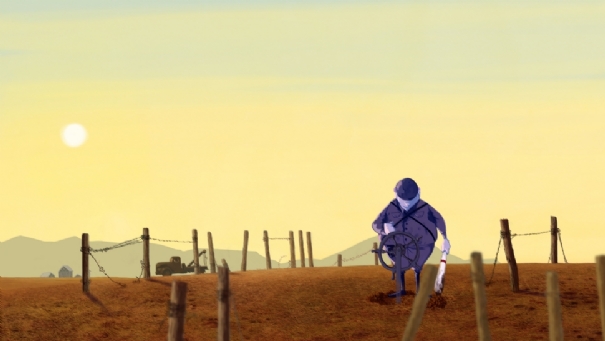In any case, the feeling we have had approaching the 10 hours required to go into the story is that the narration has been proposed in a somewhat elusive way, and perhaps in a little organic way.This is a defect, which, as we will see, also greatly affects the gam
eplay, and that on the side of the plot returns a story that is difficult to take off, and often pushes to wonder why what’s going on. It is not fair to say that the whole stylistic setting is devoid of value: the first impact with the game, on the contrary, can fascinate and hide like a Murakami story, leaving a annoying sense of incompleteness. It moves between extravagant characters and extremely rea
listic figures, as well as between events that have no logical foundation and others with a distinct sense of purpose. From all this comes a sort of misunderstanding that, in sum, can attract, though there does not seem to be any conditions to relate to any of the characters presented.Memorandum probably misses that narrative brilliance that would have so well done to t
he whole gaming structure, considering the way gameplay was conceived. Enigmas (not really) logic A good enigma can be based on a very imaginative and labile logic, but to be effective and satisfying it must be dropped into the narrative context by presenting
the elements needed for its resolution starting from the lines of the plot. Try to think of a few examples: Syberia’s aviary station, Broken Age’s intricate Barbalux nodes, even the plaster chalk marks on the small blackboard of the first Shardlight sequences
. These are quite difficult, sometimes sometimes quite unbearable, and based on trial and error , but still in an organic context. Here, in Memorandum this often does not happen, and indeed on many occasions you have the impression of having to solve logical puzzles also studied positively, but in practice extemporaneous. It feels like the feeling, in other words,
that developers have wanted to attest to their skill in delving complex puzzles, but never strive to consistently lower them within the narration.Let’s not hide that, on more than one occasion, the resolution of a puzzle happened random
ly, and not because of an insight based on elements – perhaps not quite obvious – hidden in the crevices of the plot or the setting. Th
is is the worst defect of Memorandum , the element that causes narrative to lose momentum. In many situations, for example, we were virtually forced to combine any element we had in the inventory in the hope that something would happen.
All this disperses the satisfaction that all point-and-click players experience when they come to the fore of an enigma so soon, even repetitive and hateful, but that has nothing to do with reflection. All this is a real shame, as a wholeMemoranda it w
ould have the elements to go beyond the abundant enough that we did. The Classic Graphic Adventure setting, in fact, will make
you feel at home such enthusiasts, who will also have the opportunity to easily move between different locations using the game map, as well as consulting the protagonist’s diary. Even this element, however, could have been better accomplished, as it
will only see what has already happened: inserting some help, perhaps just sketched, would probably be a wiser move. Some players, on the Steam production forum, then complained of the difficulty in identifying hot spots and objects with which to interact;
From this point of view, according to our opinion, the game was not very punitive, or in any case more “bad” than other exponent
s of the genre. In any case, at the time of writing, developers would confirm the arrival of an option that would highlight all the hotspots present on the individual screens; this feature will surely increase the compassion of gameplay.
A nice note At
the technical point of view, Memoranda only offers positive notes. The title, totally two-dimensional, is pleasing to the point of view o
f graphics, with a well-defined style and hand-crafted designs. There are no characters or landscapes that can surprise you
in a plain way, but you can not deny a certain overall pleasure, resulting in the use of soft, delicate pastel shades, as well as stylized and fascinating figures. Memoranda’s world is constantly suspended between vintage
and modern shades, and this combination is well represented by graphics.On the front, however, we learn about the prese
nce of about fifteen accompanying audio tracks, but in the game, they do not appear to be able to make such a noticeable impression. More intriguing is the dubbing in English, which offers almost always enough performances and characterizatio
ns; a note apart from the well-deserved voice of the protagonist, provided by Lisette De Artola, which appeared interesting to us because of some slight pronounced defect, which brings her to reproduce some words (especially those with many “s”) in an original way . Finally, the absence of any localization, even textual, in Italian.

